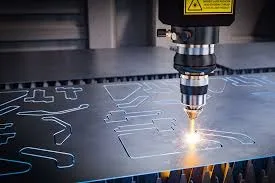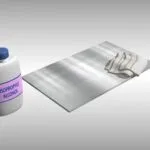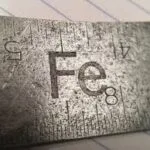
Etching and Engraving are both subtractive manufacturing processes used to create designs on various materials. While they share the common goal of removing material to produce a desired pattern, they differ significantly in their methods, applications, and resulting aesthetics. Understanding these differences is crucial for selecting the appropriate technique for a specific project.
Etching: A Chemical Process for Detailed Designs
Etching and Engraving Etching primarily relies on chemical reactions to remove material from a substrate.1 The process typically involves the following steps:
- Masking: A protective layer, often a photoresist or wax, is applied to the material’s surface, defining the areas that will not be etched.2
- Etching: The material is immersed in a chemical etchant solution, which selectively dissolves the unprotected areas.3
- Stripping: The masking layer is removed, leaving the desired pattern on the material.
Key Characteristics of Etching:
- Chemical-based: Uses chemical reactions to remove material.4
- Suitable for thin materials: Well-suited for creating intricate designs on thin sheets or films.5
- High precision: Allows for the creation of fine details and complex patterns.6
- Stress-free: Does not induce mechanical stress on the material.7
- Versatile: Can be used on various materials, including metals, glass, and semiconductors.8
| Feature | Etching | Engraving |
| Process | Chemical | Mechanical |
| Material Removal | Chemical reaction (dissolving) | Physical cutting/carving |
| Tooling | Chemical etchants, masking (photoresist/wax) | Hand tools, CNC machines, laser engravers |
| Material Suitability | Thin materials, sheets, films | Thicker materials, solids |
| Precision | High, fine details | High, but can also achieve deeper, broader cuts |
| Depth | Typically shallow, controlled depth | Variable, can be deep or shallow |
| Surface Finish | Smooth, chemically-etched | Tactile, mechanically-cut |
| Stress Induced | Minimal to none | Can induce stress (depending on technique) |
| Permanence | Durable, but can be affected by wear/corrosion | Highly permanent, resistant to wear |
| Applications | PCBs, microfluidics, decorative arts, industrial parts | Personalization, signage, tool marking, artistic expression |
| Cost (Volume) | Cost-effective for high-volume production | Can be more expensive for high-volume, cost-effective for small runs |
| Design Complexity | Excellent for intricate and complex patterns | Versatile, can achieve detailed or bold designs |
Applications of Etching:
- Printed Circuit Boards (PCBs): Etching and Engraving Creating conductive pathways on circuit boards.9
- Microfluidics: Etching and Engraving Fabricating channels and structures for manipulating fluids at the microscale.10
- Decorative Arts: Etching and Engraving Producing intricate designs on jewelry, glassware, and metalware.11
- Industrial Parts: Manufacturing precision components for various industries.12
Engraving: A Mechanical Process for Permanent Marks
Engraving, on the other hand, is a mechanical process that uses tools to physically cut into the material’s surface.13 This can be achieved through various methods, including:
- Hand Engraving: Using hand-held tools to carve designs manually.
- Machine Engraving: Employing computer-controlled machines, such as CNC routers or laser engravers, to create precise cuts.
Key Characteristics of Engraving:
- Mechanical-based: Uses physical tools to remove material.14
- Creates permanent marks: Produces deep, lasting cuts that are resistant to wear and tear.
- Suitable for thicker materials: Can be used on thicker materials and create deeper engravings.
- Offers tactile depth: Provides a noticeable three-dimensional feel to the design.
- Versatile: Can be performed on various materials, including metals, wood, and plastics.
Applications of Engraving:
- Personalization: Adding names, initials, or messages to jewelry, awards, and gifts.15
- Signage: Creating durable and permanent signs for businesses and public spaces.
- Tool Marking: Identifying tools and equipment with serial numbers or logos.16
- Artistic Expression: Producing detailed artwork and sculptures.
Choosing Between Etching and Engraving:
The choice between etching and engraving depends on several factors, including:
- Material: Etching is generally preferred for thin materials, while engraving is suitable for thicker materials.
- Design Complexity: Etching excels at creating intricate and fine details, while engraving can produce deeper and more tactile designs.
- Desired Aesthetic: Etching offers a smooth, chemically-etched finish, while engraving provides a more pronounced, mechanically-cut appearance.17
- Production Volume: Etching can be more cost-effective for high-volume production, while engraving may be preferred for one-off or small-batch projects.18
In conclusion, both etching and engraving are valuable techniques for creating designs on various materials. Understanding their fundamental differences and applications allows for the selection of the most appropriate method to achieve the desired results in terms of precision, aesthetics, and production efficiency.



